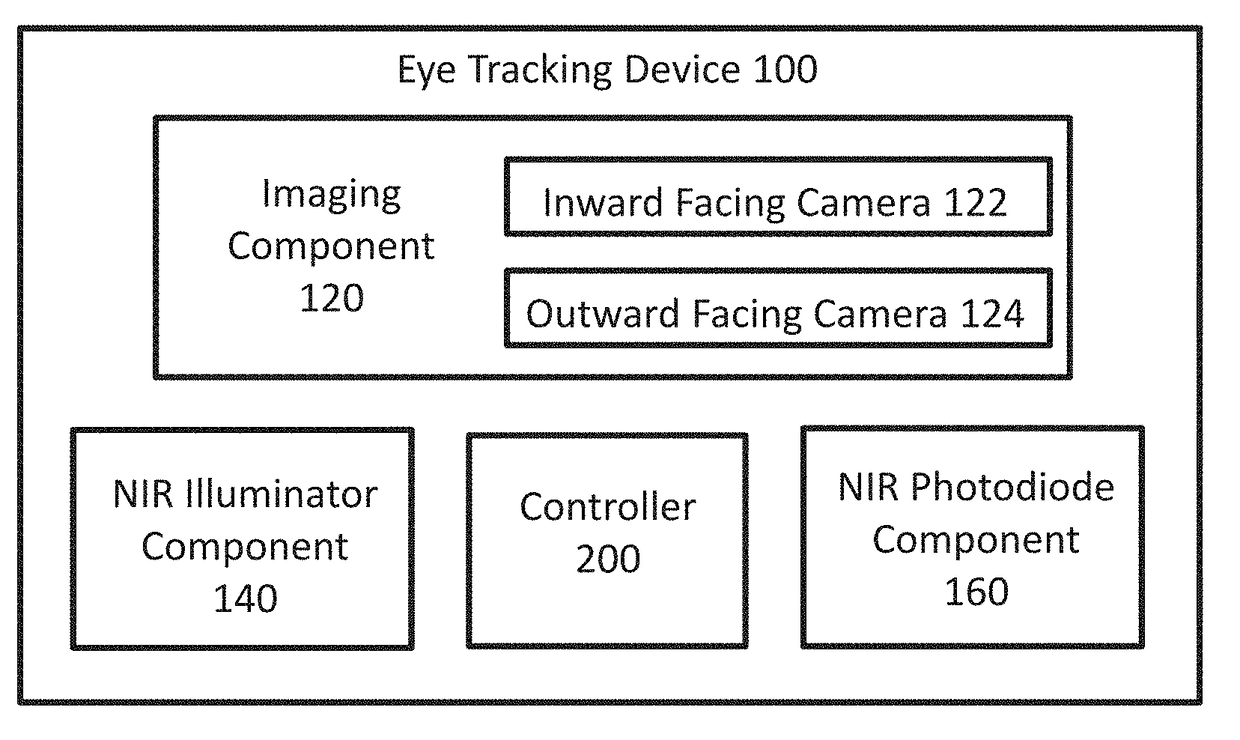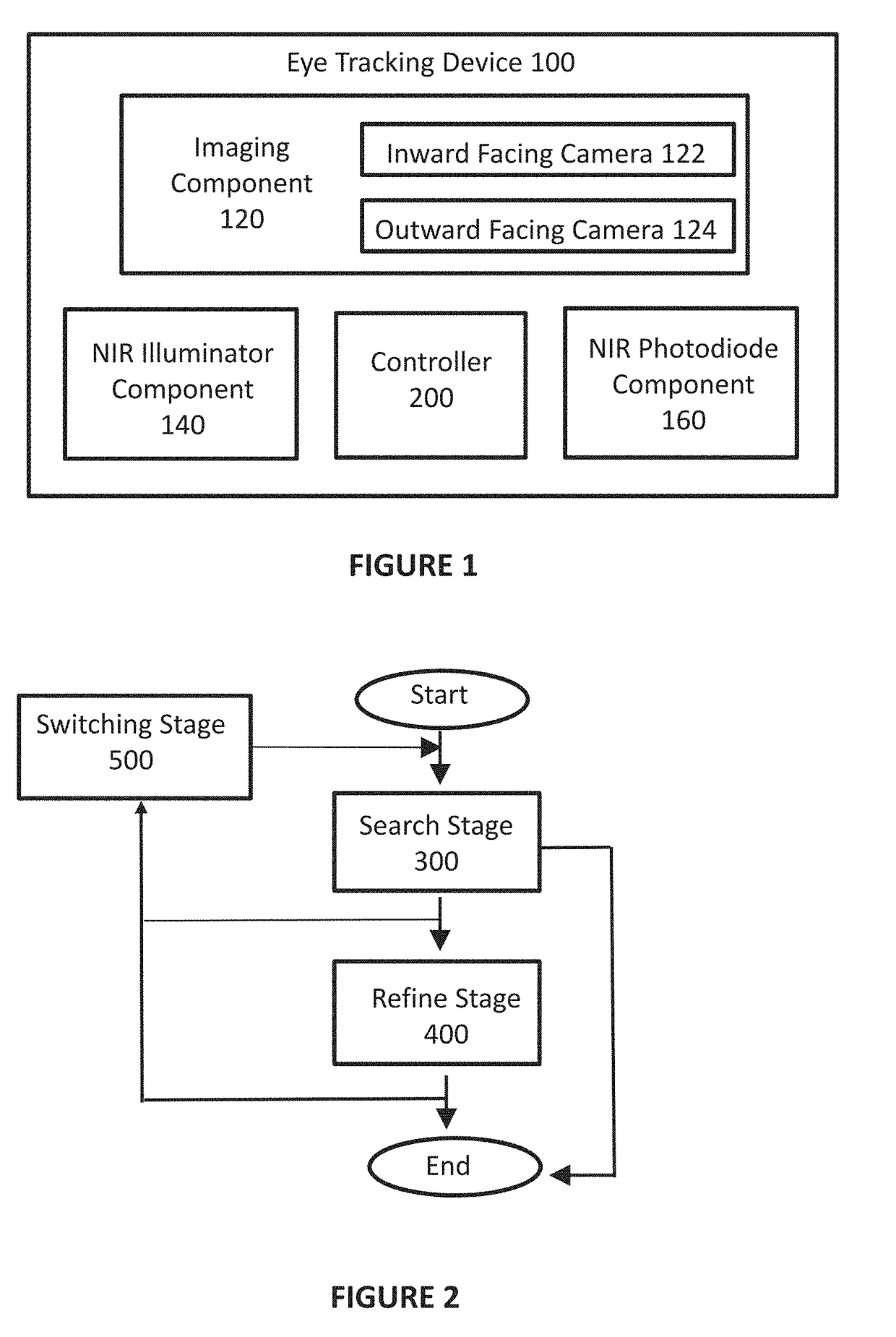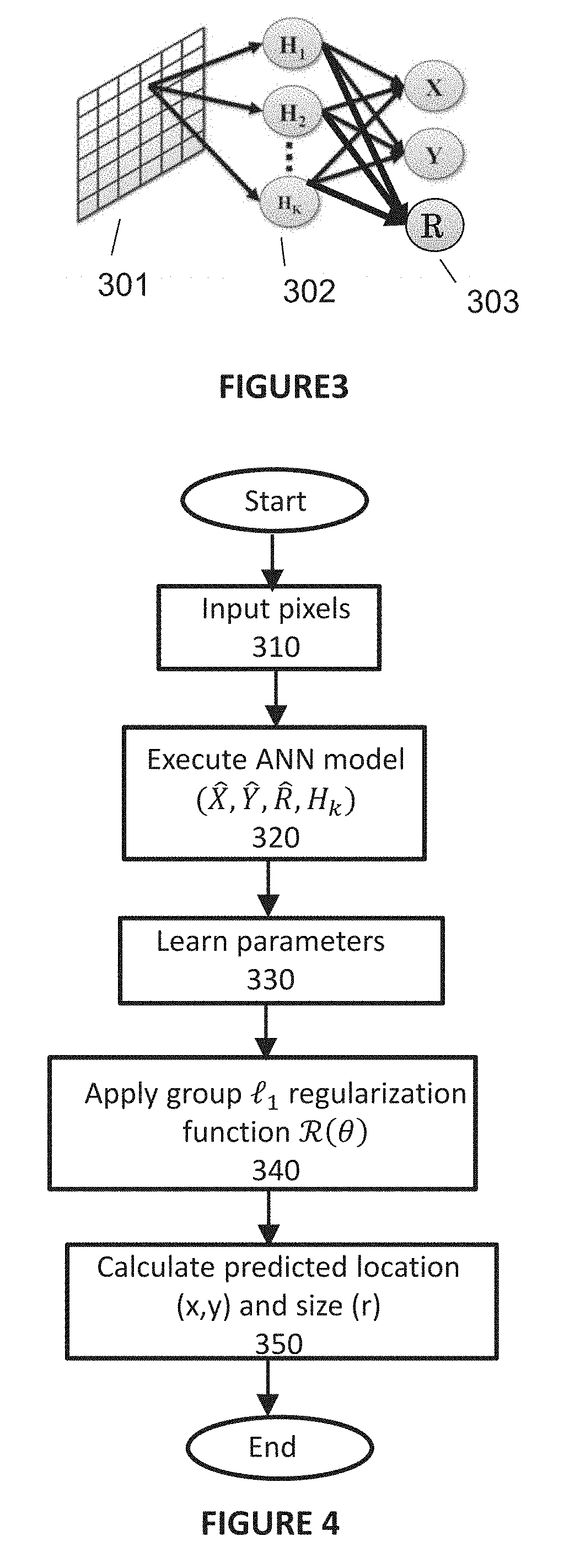Eye tracker system and methods for detecting eye parameters
a technology of eye tracking and eye parameters, applied in the field of video oculography, can solve the problems of generating megabits of data per second, lack of wearable eye tracking devices, and inability to wear wearable eye tracking devices, and achieves the effects of improving the robustness reducing the cost of power consumption, and improving the reliability of the eye tracking platform
- Summary
- Abstract
- Description
- Claims
- Application Information
AI Technical Summary
Benefits of technology
Problems solved by technology
Method used
Image
Examples
Embodiment Construction
[0057]The invention detects eye parameters using a staged architecture that trades off power for robustness. The architecture uses an optimized detector for the “common case” involving a user being indoors and in limited-noise settings, and tremendously reduces the overall power consumption down to numbers that are within the range of typical wearable devices. Noise and variable illumination settings are dealt with by using more computational and sensing heft to filter out noise and deal with variability. Very high frame rates are achieved providing the ability to sense fine-grained eye parameters. Most surprisingly, all of this functionally is achieved while operating on a small controller such as an ARM Cortex M3.
[0058]The eye tracking system for detecting eye parameters illustrated in FIG. 1 is directed to a device 100 such as an eyeglasses. An imaging component 120, such as a camera, is mounted on the device 100. In certain embodiments the imaging component 120 includes an inwar...
PUM
 Login to View More
Login to View More Abstract
Description
Claims
Application Information
 Login to View More
Login to View More - R&D
- Intellectual Property
- Life Sciences
- Materials
- Tech Scout
- Unparalleled Data Quality
- Higher Quality Content
- 60% Fewer Hallucinations
Browse by: Latest US Patents, China's latest patents, Technical Efficacy Thesaurus, Application Domain, Technology Topic, Popular Technical Reports.
© 2025 PatSnap. All rights reserved.Legal|Privacy policy|Modern Slavery Act Transparency Statement|Sitemap|About US| Contact US: help@patsnap.com



